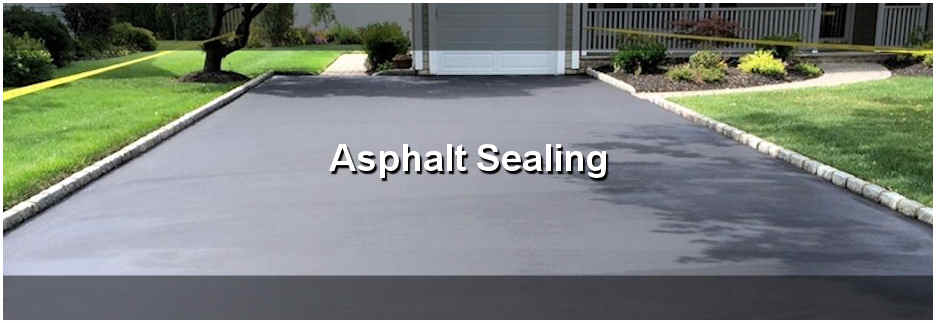Cold Mix Asphalt Vs. Hot Mix Asphalt: Which Is Right for You?

Make-up Differences
Cold mix and warm mix asphalts vary considerably in their make-up, with distinct attributes that influence their efficiency and applications. Cold mix asphalt is created by emulsifying the asphalt binder with water and an emulsifying representative before mixing it with aggregate. This approach allows for the asphalt to be convenient at reduced temperature levels, making it ideal for momentary repair work and for usage in colder weather conditions. Warm mix asphalt, on the various other hand, is produced at high temperatures, commonly in between 300-350 ° F, which helps to attain much better compaction and an extra sturdy last product. The warm mix asphalt manufacturing procedure involves warming the accumulation and asphalt binder separately before combining them at the asphalt plant.
In addition, cool mix asphalt has a tendency to be much less thick and a lot more adaptable than warm mix asphalt. This versatility makes it far better matched for locations with greater levels of motion, such as driveways or roadways with hefty website traffic. In comparison, hot mix asphalt is recognized for its high toughness and resistance to rutting and fracturing, making it a recommended option for freeways and high-traffic roadways where long life is critical.
Setup Process Variances
The procedure of installing chilly mix and hot mix asphalt shows noteworthy variances in their needs and procedures. In contrast, hot mix asphalt requires a more sophisticated installment process. Due to the home heating demands, warm mix asphalt installations are normally brought out by professionals with specific tools, ensuring a more permanent and structurally audio result.
Longevity and Durability Elements
When thinking about asphalt choices, toughness and longevity are essential elements to assess for long lasting pavement performance,. Hot mix asphalt (HMA) is known for its outstanding sturdiness and long life. The high temperature levels throughout the laying and blending procedure permit for far better compaction, causing a denser and more powerful pavement framework. This leads to HMA being more immune to hefty web traffic loads, harsh weather, and the impacts of aging compared site here to cool mix asphalt (CMA)
In regards to durability, HMA usually surpasses CMA as a result of its premium toughness and resistance properties. HMA sidewalks have a longer life span, calling for much less frequent repairs and upkeep, which can equate to set you back financial savings in the future. Furthermore, HMA sidewalks are much more quickly personalized to fulfill certain project demands, even more improving their durability.
Cost Factors To Consider
Thinking about the financial ramifications is an essential element when assessing the choice between hot mix asphalt (HMA) and cool mix asphalt (CMA) for sidewalk projects. While the preliminary price of warm mix asphalt is usually greater than that of cold mix asphalt, HMA typically gives a more cost-efficient option in the future because of its premium durability and durability. HMA is known for its ability to stand up to rush hour loads and extreme climate condition, decreasing the requirement for constant repairs and maintenance. On the other hand, chilly mix asphalt is a lot more economical ahead of time yet may require more frequent patching and resurfacing, resulting in greater maintenance prices over time.
Along with product expenses, it's necessary to think about the expenditures related to installment and maintenance when comparing HMA and CMA. HMA generally requires specialized tools and knowledgeable labor for appropriate installation, which can impact overall project prices. On the other hand, CMA is simpler to deal with and can often be used utilizing simpler strategies, potentially decreasing setup expenditures. Eventually, the decision between HMA and CMA need to consider not just the content first expense however also the long-lasting financial effects to determine the most affordable option for the particular pavement task.
Environmental Influence Comparison
Contrast of the environmental impacts in between warm mix asphalt (HMA) and cool mix asphalt (CMA) discloses distinctive distinctions in sustainability techniques. HMA manufacturing requires high temperatures, leading to raised power usage and greenhouse gas discharges.
Additionally, making use of CMA typically involves recycling existing asphalt pavement, advertising resource preservation and decreasing the amount of waste sent to land fills. This reusing aspect better boosts the sustainability of CMA compared to HMA. Generally, when thinking about the environmental impact, CMA arises as a more environmentally lasting option because of its reduced power requirements, decreased emissions, and the capacity for recycling existing materials. By going with CMA over HMA, road building projects can add favorably to environmental preservation initiatives.
Verdict
Finally, the selection between chilly mix asphalt (CMA) and hot mix asphalt (HMA) relies on various variables such as composition, setup process, resilience, long life, price, and environmental impact. cold mix asphalt. While CMA uses a fast and affordable option for small repairs, HMA makes sure exceptional durability and durability for rush hour locations. Think about these factors thoroughly to figure out which kind of asphalt is the right option for your paving requires

Considering the monetary implications is a crucial facet when evaluating the selection between warm mix asphalt (HMA) and chilly mix asphalt (CMA) for sidewalk projects. While the preliminary price of hot mix asphalt is usually higher than that of chilly mix asphalt, HMA usually provides a much more cost-effective remedy in the long run due to its exceptional longevity and longevity. asphalt patch repair.Comparison of the ecological influences in between hot mix asphalt (HMA) and cold mix asphalt (CMA) discloses distinct differences in sustainability methods.In verdict, the selection in between cool mix asphalt (CMA) and hot mix asphalt (HMA) depends on various elements such as composition, installment procedure, longevity, longevity, cost, and environmental impact